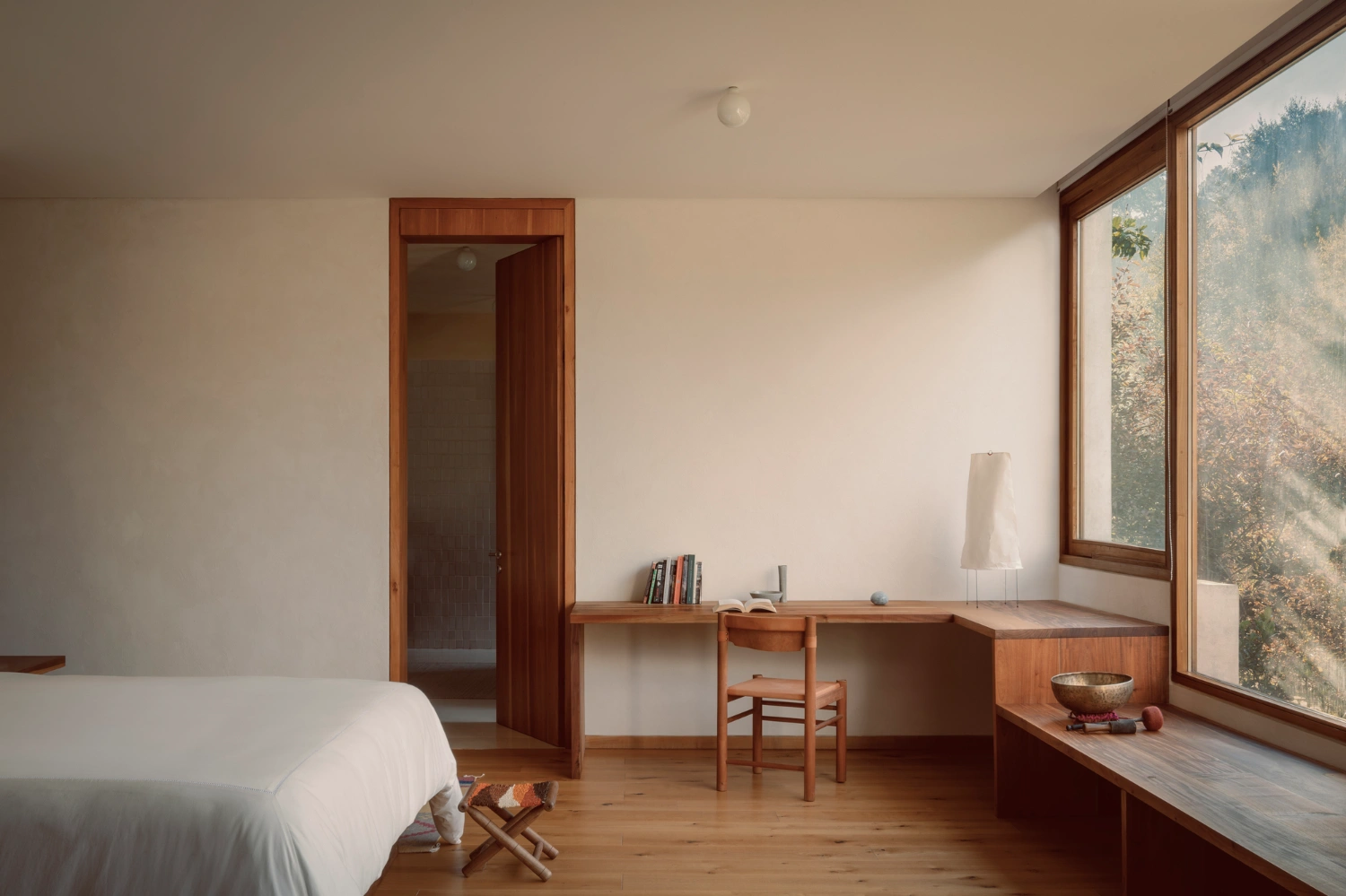Carved into a ridge in Valle de Bravo, “House Between Two Rivers” designed by Taller 3000 is less a building than a deliberate incision into the Mexican forest.
Its architecture resists spectacle; instead, it unfolds through orientation and silence. Upon approach, the house discloses itself slowly—first through three cast concrete walls, each revealing and concealing the home’s segmented life. One wall greets, another holds the shared space of kitchen and conversation, and a third, further sequestered, shelters the private quarters, each articulated by humid render and looming trees beyond.
The design leans on subtraction rather than addition—walls that hold back the terrain, a ridge sliced crosswise by a five-meter retaining structure, and a bedroom wing dug two meters further into the slope. Materials follow suit: hammered concrete and cinderblock rendered thinly, the joins whispering only when it rains. The environmental logic is equally understated. The house is warmed by thermal mass alone; its pool hidden beneath shrubs, the kitchen half-submerged in earth. Solar panels and a nearby spring replace utility lines, completing the building’s self-contained ecosystem.
What makes this work resonate is its refusal of dominance. It neither crowns the ridge nor ornaments it. Instead, it accepts gravity, allowing trapezoidal stairs and knuckled joints to negotiate the topography with quiet precision. If the living area is a terrace, then the bedroom is a grotto—each linked but distinct in atmosphere and threshold. Taller 3000’s mastery lies in this duality: a home where geometry is not just form, but temperament.























